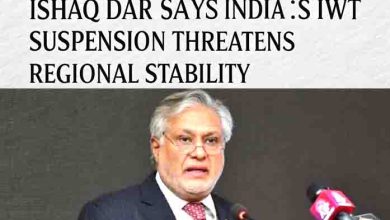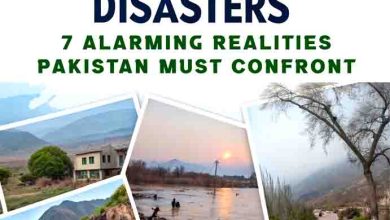Flood Danger Recedes Across Pakistan: Hopeful Recovery Begins as NDMA Forecasts Fresh Rainfall
Flood danger recedes across Pakistan as NDMA reports improving conditions. Rehabilitation begins nationwide with relief packages, compensation, and resilient recovery efforts.
Flood danger recedes across Pakistan, bringing a sigh of relief to millions who endured weeks of uncertainty. According to the National Disaster Management Authority (NDMA), flood levels have dropped significantly across most regions, with only lower Sindh facing medium-level floods.
Federal Minister for Water Resources, Moeen Wattoo, reassured the public that the worst flood threat has ended and recovery efforts are well underway. “Flood threat across the country has ended and conditions are improving,” he stated, adding that both federal and provincial governments are collaborating on rehabilitation.
Wattoo stressed that restoring basic infrastructure such as roads, schools, and health facilities is a top priority. He also emphasized compensation for affected farmers and households, ensuring transparency and speed in disbursing aid.
“Local administration and government will work together to restore facilities in affected areas,” Wattoo declared, underlining Pakistan’s commitment to stronger flood management systems to prevent future disasters.
Stable Water Levels at Major Reservoirs
The Water and Power Development Authority (WAPDA) confirmed that water levels in rivers and reservoirs have stabilized:
- Tarbela Dam: Inflow at 92,100 cusecs, outflow at 91,700 cusecs, with water storage at 5.728 million acre-feet (MAF).
- Mangla Dam: Inflow at 17,100 cusecs, outflow at 9,000 cusecs, storage at 7.126 MAF.
- Chashma Barrage: Inflow at 138,300 cusecs, outflow at 132,200 cusecs, storage at 0.311 MAF.
- Chenab River (Head Marala): Inflow at 37,200 cusecs, outflow at 24,800 cusecs.
- Kabul River (Nowshera): Inflow and outflow both at 15,700 cusecs.
The combined water storage in Tarbela, Mangla, and Chashma reservoirs currently stands at 13.165 MAF.
According to the Flood Forecasting Division (FFD), Kotri Barrage remains in medium flood condition with flows around 400,000 cusecs, but the situation is expected to normalize by the end of September.
Meanwhile, flows at Guddu and Sukkur barrages are receding, while low-level floods persist at Sulemanki and Islam barrages.
NDMA Forecasts Rainfall in Indus, Kabul Catchments
Even as the flood danger recedes across Pakistan, NDMA has cautioned about upcoming rainfall in the next 24 hours in:
- Upper catchments of the Indus River
- Upper catchments of the Kabul River
- Rawalpindi and Islamabad regions
The authority urged the public to avoid unnecessary travel and refrain from crossing floodwaters. People in relief camps have been advised to wait for official clearance before returning home.
The National Emergencies Operation Center (NEOC) continues to monitor river flows and weather patterns around the clock, issuing timely alerts to provincial authorities.
Punjab Announces Relief and Compensation Packages
Punjab Chief Minister Maryam Nawaz has unveiled a comprehensive relief package for flood-affected communities, pledging that assistance will be financed entirely through provincial resources.
Key Features of Punjab’s Relief Plan:
- Farmers: Rs20,000 per acre compensation for damaged crops.
- Families: Rs1 million for complete home loss, Rs500,000 for partial damage.
- Livestock Owners: Rs500,000 for cattle loss.
- Relief Cards: To ensure efficient aid distribution without long queues.
- Housing Support: 80,000 houses under construction through Apni Chhat Apna Ghar, with expansion to 100,000 by December.
According to official statistics, more than 4.7 million people have been affected, including 2.6 million directly, while over 2.1 million livestock were lost. Rescue teams numbering 2,213 are actively engaged in relief operations across 27 districts and 4,794 villages.
Nationwide Rehabilitation and Resilience Planning
With floodwaters receding, the focus is now shifting to long-term rehabilitation. NDMA has instructed private industries and humanitarian organizations to contribute to ongoing aid, ensuring essentials such as food, shelter, and healthcare reach the most vulnerable.
Provincial governments are prioritizing:
- Restoration of roads, bridges, and power supply
- Safe drinking water supply and sanitation
- Health services in affected regions
- Climate-smart agriculture to help farmers recover faster
Experts highlight that building resilient infrastructure and modernizing flood management systems will be crucial for Pakistan to withstand future disasters.
Khyber-Pakhtunkhwa Receives International Aid
In Khyber-Pakhtunkhwa, France has pledged €500,000 in humanitarian support for flood victims. French Ambassador Nicolas Galey emphasized France’s solidarity with Pakistan, describing the assistance as a reflection of “friendship in the face of climate challenges.”
This international aid supplements domestic relief operations, highlighting the need for global cooperation as Pakistan battles climate-induced disasters.
Looking Ahead: Long-Term Flood Management
While flood danger recedes across Pakistan, experts warn that Pakistan must prepare for future climate shocks. With rising monsoon variability and glacier melt, flood management and disaster preparedness must remain at the heart of national planning.
Key long-term strategies include:
- Expanding early warning systems for rivers and urban flooding
- Strengthening dykes, embankments, and barrages
- Enhancing cross-border water management diplomacy
- Investing in climate-resilient infrastructure
- Engaging communities in awareness campaigns
As rehabilitation continues, Pakistan’s challenge lies not only in restoring what was lost but in building a resilient future where such disasters cause minimal disruption.
 Image Alt Text: Flood danger recedes across Pakistan – relief and rehabilitation efforts underway
Image Alt Text: Flood danger recedes across Pakistan – relief and rehabilitation efforts underway
Internal & External Links
- Internal: Pakistan’s Climate Vulnerability Report
- External: NDMA Official Flood Updates | WAPDA Hydrological Reports







